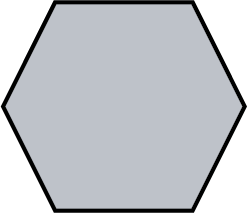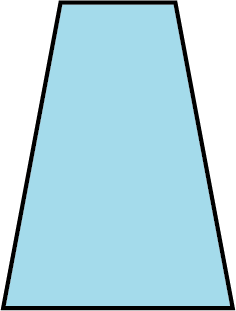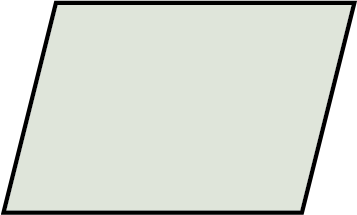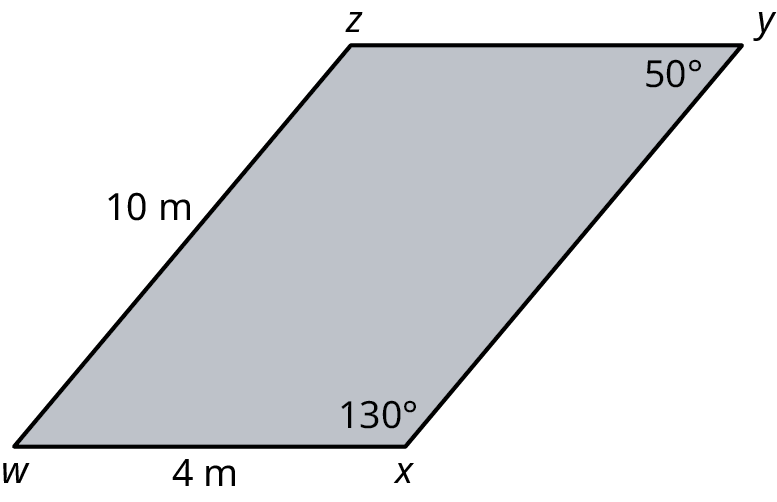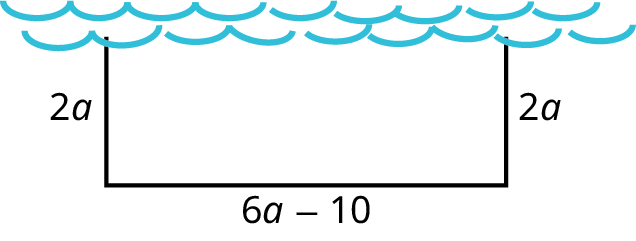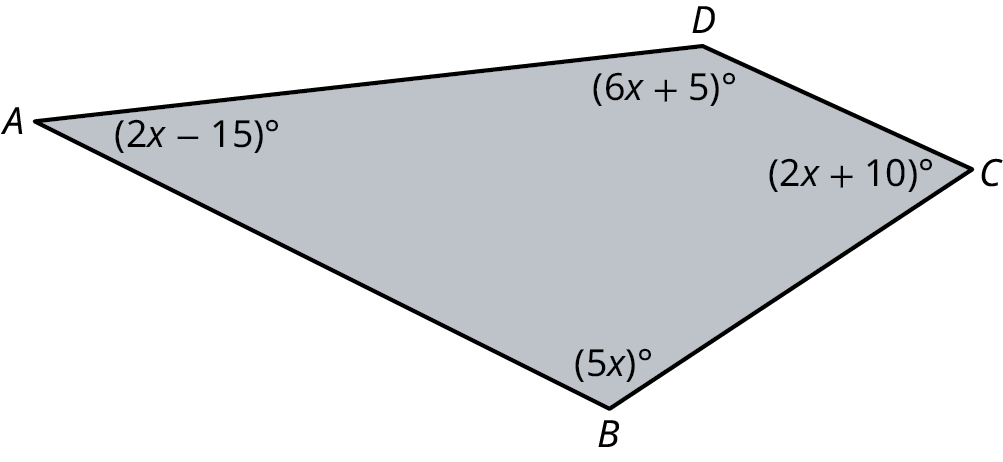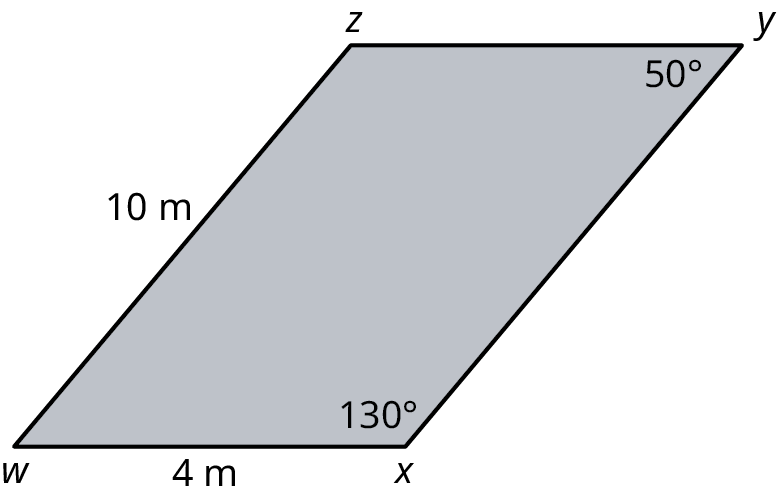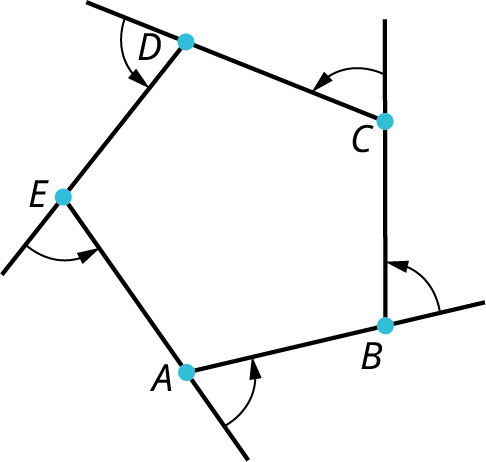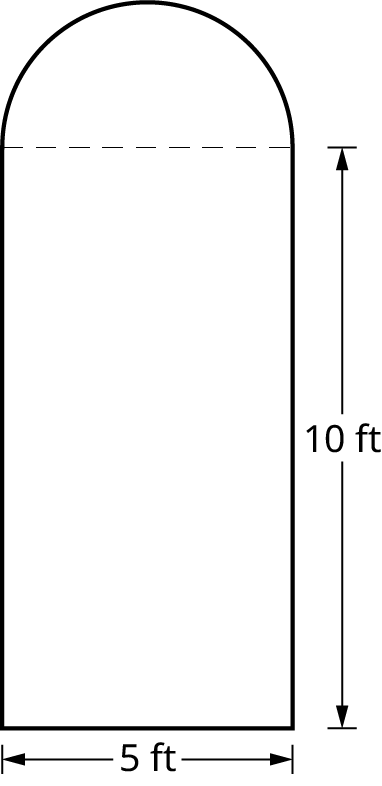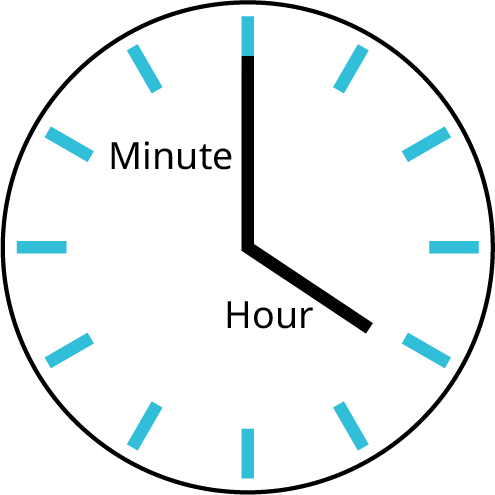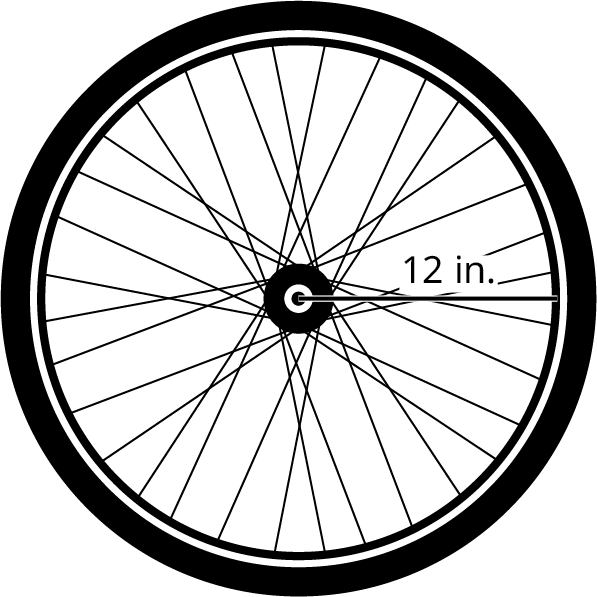10.5: Polygons, Perimeter, and Circumference
- Page ID
- 129643
Learning Objectives
After completing this section, you should be able to:
- Identify polygons by their sides.
- Identify polygons by their characteristics.
- Calculate the perimeter of a polygon.
- Calculate the sum of the measures of a polygon’s interior angles.
- Calculate the sum of the measures of a polygon’s exterior angles.
- Calculate the circumference of a circle.
- Solve application problems involving perimeter and circumference.
In our homes, on the road, everywhere we go, polygonal shapes are so common that we cannot count the many uses. Traffic signs, furniture, lighting, clocks, books, computers, phones, and so on, the list is endless. Many applications of polygonal shapes are for practical use, because the shapes chosen are the best for the purpose.
Modern geometric patterns in fabric design have become more popular with time, and they are used for the beauty they lend to the material, the window coverings, the dresses, or the upholstery. This art is not done for any practical reason, but only for the interest these shapes can create, for the pure aesthetics of design.
When designing fabrics, one has to consider the perimeter of the shapes, the triangles, the hexagons, and all polygons used in the pattern, including the circumference of any circular shapes. Additionally, it is the relationship of one object to another and experimenting with different shapes, changing perimeters, or changing angle measurements that we find the best overall design for the intended use of the fabric. In this section, we will explore these properties of polygons, the perimeter, the calculation of interior and exterior angles of polygons, and the circumference of a circle.
Identifying Polygons
A polygon is a closed, two-dimensional shape classified by the number of straight-line sides. See Figure 10.82 for some examples. We show only up to eight-sided polygons, but there are many, many more.
If all the sides of a polygon have equal lengths and all the angles are equal, they are called regular polygons. However, any shape with sides that are line segments can classify as a polygon. For example, the first two shapes, shown in Figure 10.83 and Figure 10.83, are both pentagons because they each have five sides and five vertices. The third shape Figure 10.83 is a hexagon because it has six sides and six vertices. We should note here that the hexagon in Figure 10.83 is a concave hexagon, as opposed to the first two shapes, which are convex pentagons. Technically, what makes a polygon concave is having an interior angle that measures greater than . They are hollowed out, or cave in, so to speak. Convex refers to the opposite effect where the shape is rounded out or pushed out.
While there are variations of all polygons, quadrilaterals contain an additional set of figures classified by angles and whether there are one or more pairs of parallel sides. See Figure 10.84.
Example 10.24
Identifying Polygons
Identify each polygon.
- Answer
- This shape has six sides. Therefore, it is a hexagon.
- This shape has four sides, so it is a quadrilateral. It has two pairs of parallel sides making it a parallelogram.
- This shape has eight sides making it an octagon.
- This is an equilateral triangle, as all three sides are equal.
- This is a rhombus; all four sides are equal.
- This is a regular octagon, eight sides of equal length and equal angles.
Your Turn 10.24

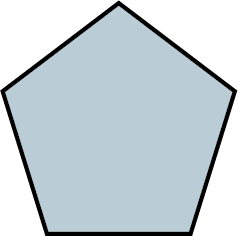
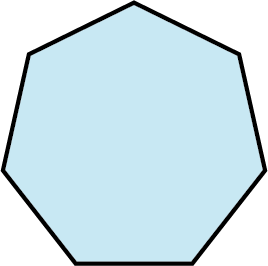
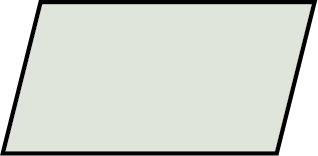
Example 10.25
Determining Multiple Polygons
What polygons make up Figure 10.85?
- Answer
Shapes 1 and 5 are hexagons; shapes 2, 3, 4, 6, 7, 9, 10, 12, 13, 14, 15, and 16 are triangles; shapes 8 and 17 are parallelograms; and shape 11 is a trapezoid.
Your Turn 10.25
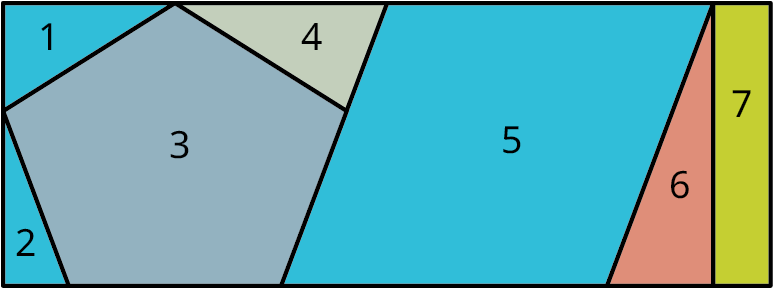
Perimeter
Perimeter refers to the outside measurements of some area or region given in linear units. For example, to find out how much fencing you would need to enclose your backyard, you will need the perimeter. The general definition of perimeter is the sum of the lengths of the sides of an enclosed region. For some geometric shapes, such as rectangles and circles, we have formulas. For other shapes, it is a matter of just adding up the side lengths.
A rectangle is defined as part of the group known as quadrilaterals, or shapes with four sides. A rectangle has two sets of parallel sides with four angles. To find the perimeter of a rectangle, we use the following formula:
FORMULA
The formula for the perimeter of a rectangle is , twice the length plus twice the width .
For example, to find the length of a rectangle that has a perimeter of 24 inches and a width of 4 inches, we use the formula. Thus,
The length is 8 units.
The perimeter of a regular polygon with sides is given as . For example, the perimeter of an equilateral triangle, a triangle with three equal sides, and a side length of 7 cm is .
Example 10.26
Finding the Perimeter of a Pentagon
Find the perimeter of a regular pentagon with a side length of 7 cm (Figure 10.87).
- Answer
A regular pentagon has five equal sides. Therefore, the perimeter is equal to .
Your Turn 10.26
Example 10.27
Finding the Perimeter of an Octagon
Find the perimeter of a regular octagon with a side length of 14 cm (Figure 10.88).
- Answer
A regular octagon has eight sides of equal length. Therefore, the perimeter of a regular octagon with a side length of 14 cm is .
Your Turn 10.27
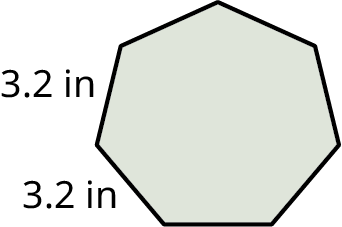
Sum of Interior and Exterior Angles
To find the sum of the measurements of interior angles of a regular polygon, we have the following formula.
FORMULA
The sum of the interior angles of a polygon with sides is given by
For example, if we want to find the sum of the interior angles in a parallelogram, we have
Similarly, to find the sum of the interior angles inside a regular heptagon, we have
To find the measure of each interior angle of a regular polygon with sides, we have the following formula.
FORMULA
The measure of each interior angle of a regular polygon with sides is given by
For example, find the measure of an interior angle of a regular heptagon, as shown in Figure 10.90. We have
Example 10.28
Calculating the Sum of Interior Angles
Find the measure of an interior angle in a regular octagon using the formula, and then find the sum of all the interior angles using the sum formula.
- Answer
An octagon has eight sides, so .
Step 1: Using the formula :
So, the measure of each interior angle in a regular octagon is .
Step 2: The sum of the angles inside an octagon, so using the formula:
Step 3: We can test this, as we already know the measure of each angle is . Thus, .
Your Turn 10.28
Example 10.29
Calculating Interior Angles
Use algebra to calculate the measure of each interior angle of the five-sided polygon (Figure 10.91).
- Answer
Step 1: Let us find out what the total of the sum of the interior angles should be. Use the formula for the sum of the angles in a polygon with sides: . So, .
Step 2: We add up all the angles and solve for :
Step 3: We can then find the measure of each interior angle:
Your Turn 10.29
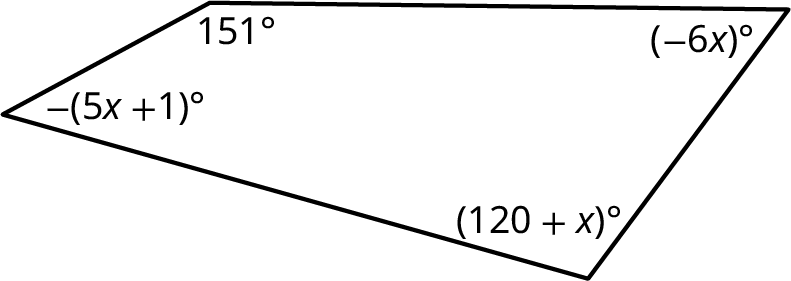
An exterior angle of a regular polygon is an angle formed by extending a side length beyond the closed figure. The measure of an exterior angle of a regular polygon with sides is found using the following formula:
FORMULA
To find the measure of an exterior angle of a regular polygon with sides we use the formula
In Figure 10.93, we have a regular hexagon . By extending the lines of each side, an angle is formed on the exterior of the hexagon at each vertex. The measure of each exterior angle is found using the formula, .
Now, an important point is that the sum of the exterior angles of a regular polygon with
Example 10.30
Calculating the Sum of Exterior Angles
Find the sum of the measure of the exterior angles of the pentagon (Figure 10.94).
- Answer
Each individual angle measures
360 5 = 72 ∘ . 360 5 = 72 ∘ . 5 ( 72 ∘ ) = 360 ∘ . 5 ( 72 ∘ ) = 360 ∘ .
Your Turn 10.30
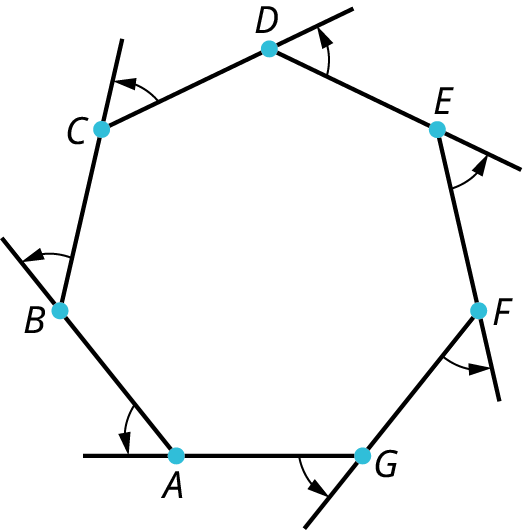
Circles and Circumference
The perimeter of a circle is called the circumference. To find the circumference, we use the formula
FORMULA
The circumference of a circle is found using the formula
The radius is ½ of the diameter of a circle. The symbol
Let the radius be equal to 3.5 inches. Then, the circumference is
Example 10.31
Finding Circumference with Diameter
Find the circumference of a circle with diameter 10 cm.
- Answer
If the diameter is 10 cm, the circumference is
C = 10 π = 31.42 cm . C = 10 π = 31.42 cm .
Your Turn 10.31
Example 10.32
Finding Circumference with Radius
Find the radius of a circle with a circumference of 12 in.
- Answer
If the circumference is 12 in, then the radius is
12 = 2 π r 12 2 π = r = 1.91 in . 12 = 2 π r 12 2 π = r = 1.91 in .
Your Turn 10.32
Example 10.33
Calculating Circumference for the Real World
You decide to make a trim for the window in Figure 10.97. How many feet of trim do you need to buy?
- Answer
The trim will cover the 6 feet along the bottom and the two 12-ft sides plus the half circle on top. The circumference of a semicircle is ½ the circumference of a circle. The diameter of the semicircle is 6 ft. Then, the circumference of the semicircle would be
1 2 π d = 1 2 π ( 6 ) = 3 π ft = 9.4 ft . 1 2 π d = 1 2 π ( 6 ) = 3 π ft = 9.4 ft . Therefore, the total perimeter of the window is
6 + 12 + 12 + 9.4 = 39.4 ft . 6 + 12 + 12 + 9.4 = 39.4 ft .
Your Turn 10.33

People in Mathematics
Archimedes
The overwhelming consensus is that Archimedes (287–212 BCE) was the greatest mathematician of classical antiquity, if not of all time. A Greek scientist, inventor, philosopher, astronomer, physicist, and mathematician, Archimedes flourished in Syracuse, Sicily. He is credited with the invention of various types of pulley systems and screw pumps based on the center of gravity. He advanced numerous mathematical concepts, including theorems for finding surface area and volume. Archimedes anticipated modern calculus and developed the idea of the “infinitely small” and the method of exhaustion. The method of exhaustion is a technique for finding the area of a shape inscribed within a sequence of polygons. The areas of the polygons converge to the area of the inscribed shape. This technique evolved to the concept of limits, which we use today.
One of the more interesting achievements of Archimedes is the way he estimated the number pi, the ratio of the circumference of a circle to its diameter. He was the first to find a valid approximation. He started with a circle having a diameter of 1 inch. His method involved drawing a polygon inscribed inside this circle and a polygon circumscribed around this circle. He knew that the perimeter of the inscribed polygon was smaller than the circumference of the circle, and the perimeter of the circumscribed polygon was larger than the circumference of the circle. This is shown in the drawing of an eight-sided polygon. He increased the number of sides of the polygon each time as he got closer to the real value of pi. The following table is an example of how he did this.
| Sides | Inscribed Perimeter | Circumscribed Perimeter |
|---|---|---|
| 4 | 2.8284 | 4.00 |
| 8 | 3.0615 | 3.3137 |
| 16 | 3.1214 | 3.1826 |
| 32 | 3.1365 | 3.1517 |
| 64 | 3.1403 | 3.1441 |
Archimedes settled on an approximation of
Who Knew?
The Platonic Solids
The Platonic solids (Figure 10.100) have been known since antiquity. A polyhedron is a three-dimensional object constructed with congruent regular polygonal faces. Named for the philosopher, Plato believed that each one of the solids is associated with one of the four elements: Fire is associated with the tetrahedron or pyramid, earth with the cube, air with the octahedron, and water with the icosahedron. Of the fifth Platonic solid, the dodecahedron, Plato said, “… God used it for arranging the constellations on the whole heaven.”
Plato believed that the combination of these five polyhedra formed all matter in the universe. Later, Euclid proved that exactly five regular polyhedra exist and devoted the last book of the Elements to this theory. These ideas were resuscitated by Johannes Kepler about 2,000 years later. Kepler used the solids to explain the geometry of the universe. The beauty and symmetry of the Platonic solids have inspired architects and artists from antiquity to the present.
Check Your Understanding
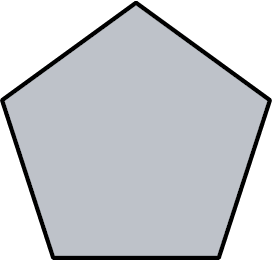
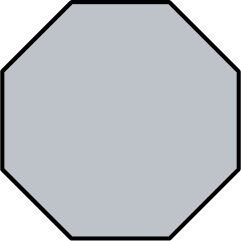
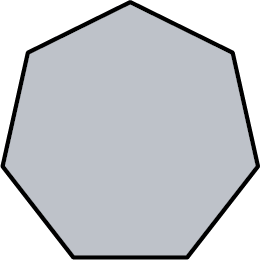

Section 10.4 Exercises
